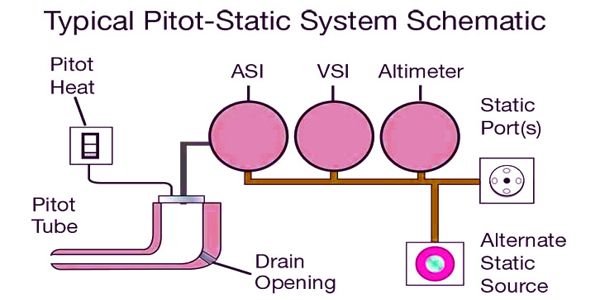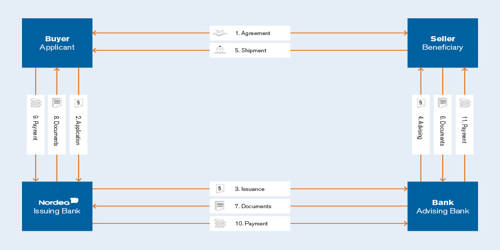The pitot-static system is a pressure-based aircraft system that measures and compares ram and static pressure. It is a pressure-sensitive instrumentation system that is commonly used in aviation to determine an aircraft’s airspeed, Mach number, altitude, and altitude trend. This data is then transmitted to cockpit instruments, providing the pilot with information on aircraft altitude, airspeed, and vertical speed. A pitot-static system is made up of three parts: a pitot tube, a static port, and pitot-static instruments.
The pitot-static system is made up of a few parts: a pitot tube and one or more static ports (which you’ve probably double-checked during the preflight inspection), as well as the associated lines that connect the pitot tube and static ports to the airspeed indicator, vertical speed indicator, and altimeter. Air data computers, flight data recorders, altitude encoders, cabin pressurization controllers, and various airspeed switches may also be connected.
You’re inspecting the pitot tube and static ports for obstructions, as debris or insects could prevent the pitot tube and ports from doing their job, which is to sample air pressure, which is then measured by the airspeed indicator, vertical speed indicator, and altimeter.

Pitot-static errors
Pitot-static system reading errors can be extremely dangerous because the information obtained from the pitot-static system, such as altitude, is potentially life-threatening. Several commercial airline disasters have been linked to pitot-static system failures.
When not in use, your trainer may wear a pitot cover, which is a small sleeve that fits over the pitot tube. The cover keeps insects and dirt out of either of the pitot tube’s ports—the one in front that reads air pressure and the one in the back that serves as a drainage hole if you fly in rain.
The pitot-static instrument system operates on the principle of an air pressure gradient. It works by measuring pressures or pressure differences and then calculating speed and altitude based on these values. These pressures can be measured using either the static port (static pressure) or the pitot tube (pitot tube pressure) (pitot pressure). Static pressure is used in all measurements, whereas pitot pressure is only used to calculate airspeed.
The airspeed indicator, vertical speed indicator, and altimeter will all be affected if one or more static ports become clogged. The airspeed indicator will continue to function, but it will no longer be accurate. Meanwhile, the vertical speed indicator will remain at zero, and the altimeter will remain at the altitude where the blockage occurred.
Information Source:
















